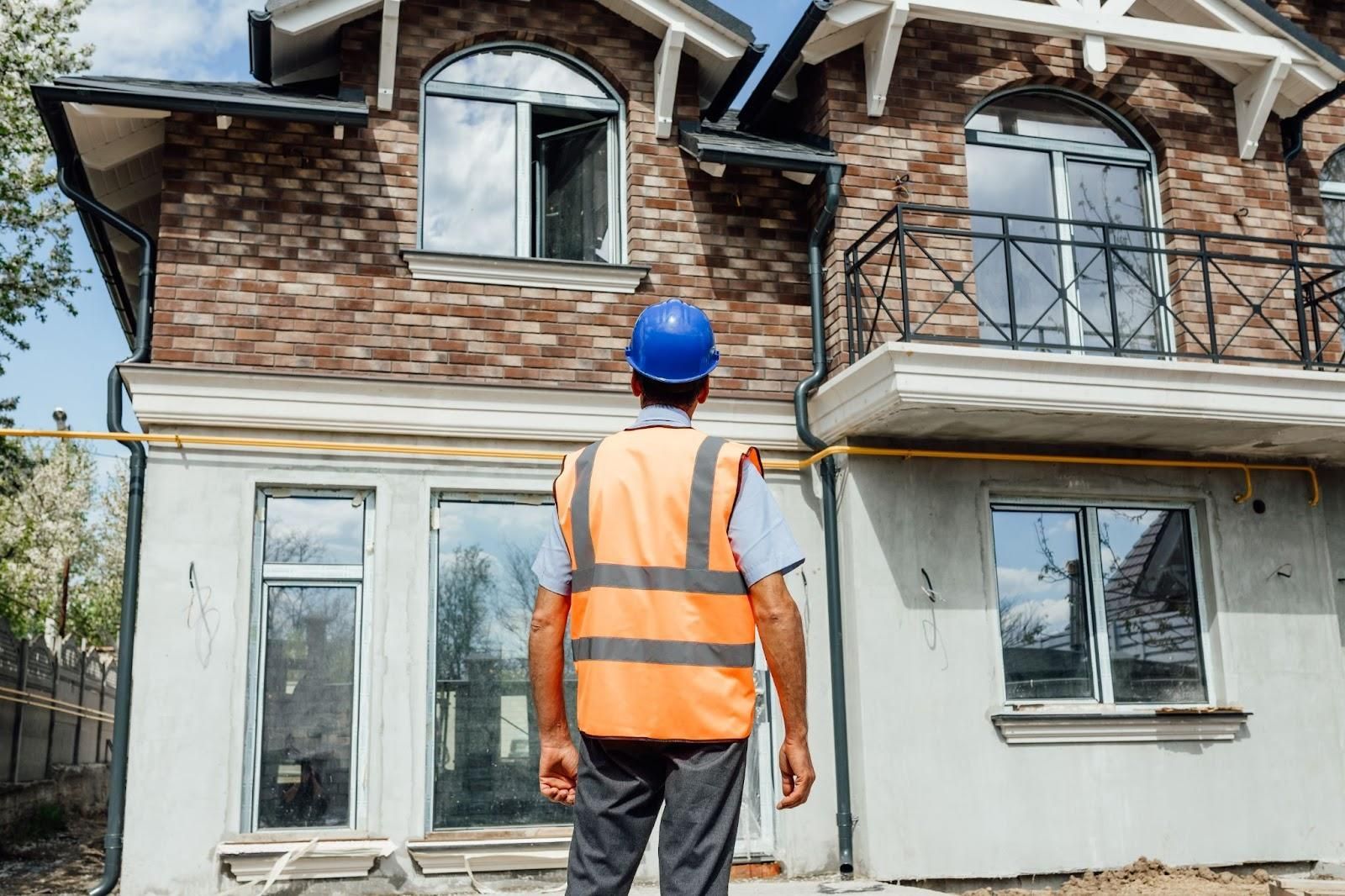Top Common ADA Violations Found During Inspections
Navigating the world of property inspections can be a daunting task, especially when it comes to ensuring compliance with the Americans with Disabilities Act (ADA). Property owners often find themselves frustrated by the complexities of ADA regulations, leading to unexpected violations during evaluations. These common ADA violations can not only hinder accessibility but also result in costly fines and extensive renovations.
Common ADA Violations
Inspectors frequently encounter a variety of ADA violations during inspections. Identifying these issues helps property owners maintain compliance and accessibility standards.
Accessibility Issues
Accessibility issues typically arise when pathways or entrances lack proper design. Ramps may not have the appropriate slope, making it difficult for wheelchair users to enter buildings. Doorways might not meet required widths, limiting access for individuals with mobility impairments. Additionally, surfaces may be uneven, presenting hazards for those with disabilities.
Path of Travel Violations
Path of travel violations occur when accessible routes fall short of ADA standards. Walkways may not be continuous, forcing individuals to navigate obstacles. Changes in elevation typically lack proper signage or ramps, impeding mobility. Furthermore, the presence of poor lighting can create hazards in accessible paths, resulting in safety concerns.
Signage Noncompliance
Signage noncompliance can lead to confusion for individuals with disabilities. Accessible facility signs may lack appropriate braille or tactile elements, affecting navigation for those with visual impairments. Directional signs might not use high contrast, resulting in readability issues. Locations of accessible features must be clearly marked to ensure users find necessary services and amenities efficiently.
Inspection Procedures

Inspection procedures for ADA compliance focus on evaluating property accessibility and safety. Accurate Home and Commercial Services employs systematic protocols to ensure thorough assessments.
Preparation for Inspections
Preparation for inspections involves gathering necessary documentation and ensuring site readiness. Inspectors review architectural plans, identify areas of concern, and communicate with property managers about existing conditions. It's essential for property managers to ensure clear access to all areas needing inspection. Maintaining organized records simplifies the process and promotes efficiency during the inspection.
What Inspectors Look For
Inspectors look for various critical elements that contribute to ADA compliance. They assess the accessibility of entrances, including door widths, ramps, and signage. Inspectors also examine restrooms for adherence to accessibility standards, ensuring features like grab bars and sink heights meet regulations. Parking areas receive scrutiny for designated accessible spaces and proximity to building entrances. Lighting levels, path continuity, and surface conditions all undergo detailed evaluation. These focused examinations reveal potential violations and inform necessary corrections.
Accuracy in inspections fosters compliance and contributes to safer environments for all individuals, including those with disabilities.
Consequences of Violations
ADA violations result in significant repercussions across various sectors. Understanding these consequences fosters compliance and ensures accessibility.
Legal Ramifications
Legal consequences arise from noncompliance with ADA regulations. Individuals can file lawsuits, leading to lengthy litigation processes. Courts may mandate corrective actions and impose penalties on property owners. Legal fees accumulate, adding financial strain during disputes. Government agencies may also conduct investigations, which can escalate to formal complaints. Engaging in proactive inspections minimizes legal risks, protecting property owners from the daunting legal landscape associated with ADA violations.
Financial Penalties
Financial penalties for ADA violations can be severe. Fines vary based on the nature of the violation and may range from thousands to hundreds of thousands of dollars. Repeat offenders face steeper penalties, compounding financial stress. Repairing violations incurs additional costs, diverting funds from essential projects. Property values may also decrease due to non-compliance, impacting overall investment returns. Regular inspections by Accurate Home and Commercial Services prevent costly repercussions and ensure adherence to accessibility standards.
Best Practices for Compliance
Ensuring ADA compliance involves implementing effective practices. Focus on accessibility from the earliest stages of a project, including planning and design. Engage professionals familiar with ADA regulations to assess property layouts and conditions.
Evaluate Critical Areas
- Entrances: Ensure entrances are accessible, with ramps and thresholds that comply with ADA standards.
- Restrooms: Install features like grab bars and accessible sinks, adhering to proper dimensions.
- Parking: Design designated parking spaces clearly marked for individuals with disabilities, located near entrances.
Conduct Regular Inspections
- Systematic Reviews: Schedule routine inspections to identify potential ADA violations before they become issues.
- Documentation: Keep records of inspections, addressing identified concerns immediately for compliance assurance.
- Staff Training: Educate staff on ADA requirements and accessibility protocols, promoting a culture of inclusivity.
Implement Signage Standards
- Visibility: Use high-contrast signage that is easily readable for individuals with visual impairments.
- Tactile Features: Include Braille or raised characters on directional signs to assist individuals with disabilities.
- Maintenance: Regularly inspect all signage for clarity and visibility, replacing or updating as necessary.
Collaborate with Experts
- Consultants: Work with ADA compliance consultants to identify specific needs and solutions for each property.
- Government Resources: Utilize resources from the ADA National Network to stay updated on regulations and best practices.
- Feedback Mechanism: Establish a feedback system to gather input from individuals with disabilities regarding accessibility.
These best practices promote compliance and enhance accessibility, benefiting all individuals. To ensure adherence to ADA regulations, consider services from Accurate Home and Commercial Services. Their expertise aids in conducting thorough ADA inspections, maintaining a focus on accessibility across properties.
Conclusion
Addressing ADA violations is crucial for creating accessible environments that benefit everyone. Property owners must remain vigilant in identifying and rectifying potential issues before they escalate into costly problems.
Regular inspections by Accurate Home and Commercial Services not only ensure compliance but also foster inclusivity for individuals with disabilities. By prioritizing accessibility and staying informed on ADA regulations, homeowners can mitigate legal risks and enhance the overall value of their properties. Investing in thorough inspections paves the way for safer and more welcoming spaces for all.
Frequently Asked Questions
What is the Americans with Disabilities Act (ADA)?
The Americans with Disabilities Act (ADA) is a federal law that ensures equal access and prohibits discrimination against individuals with disabilities in various areas, including employment, public services, and accommodations. It mandates specific design and construction standards to enhance accessibility in both public and private spaces.
Why are property inspections important for ADA compliance?
Property inspections are crucial for verifying if buildings meet ADA standards. Regular inspections help identify and fix violations before they escalate into significant issues, ensuring that properties are accessible and compliant, which ultimately mitigates legal risks and improves safety for all.
What are common ADA violations found during inspections?
Common ADA violations include improperly designed pathways, inadequate doorway widths, uneven surfaces, and non-compliant signage. These issues can hinder accessibility for individuals with disabilities, leading to frustration and potential legal consequences for property owners.
How can Accurate Home and Commercial Services help with ADA compliance?
Accurate Home and Commercial Services specializes in thorough ADA inspections designed to identify potential compliance issues before they become major problems. Their expertise helps property owners ensure accessibility and reduce the risk of facing costly fines or lawsuits.
What consequences can arise from ADA violations?
Consequences of ADA violations can include legal action, hefty fines, and costly repairs. Noncompliance can also damage a property's reputation and lead to decreased property values, making regular inspections essential to maintain safety and legality.
What best practices should property owners follow for ADA compliance?
Property owners should prioritize accessibility from the outset of a project, engage ADA professionals, conduct regular inspections, maintain proper documentation, and ensure signage meets visibility standards. These practices enhance compliance and foster an inclusive environment for individuals with disabilities.











